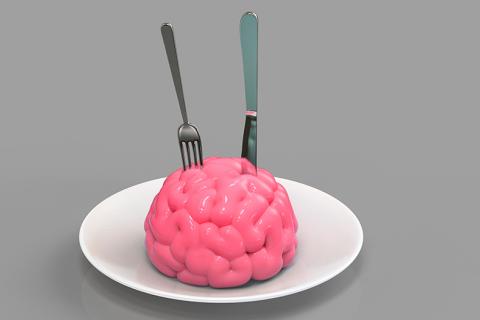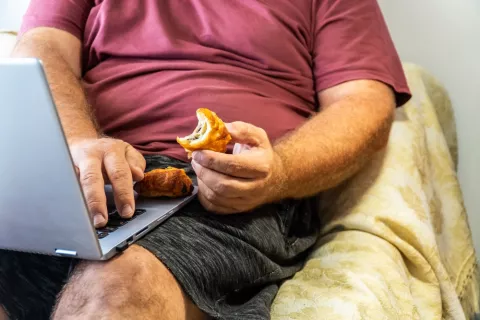
Eating is a pleasure for most people, and the pleasure that food provides has to do with the way our brain responds to what we eat. It’s known, for example, that there’s a link between food and pain because chronic pain sufferers often struggle with their weight, and now a new study may have found the reason, as its results suggest that experiencing Pain affects brain circuits involved in motivation and pleasure.
Chronic pain is associated with anhedonia (inability to feel pleasure) and reduced motivation, and these behavioral disturbances have been associated with disturbances in the limbic brain and could explain the increased risk of obesity in pain patients.
The research has been conducted by scientists at the Del Monte Institute for Neuroscience and has been published in PLOS ONE. “These findings may reveal new physiological mechanisms that link chronic pain to a change in a person’s eating behavior.” “And this change can lead to the development of obesity,” said Dr. Paul Geha, lead author of the work.
Eating behavior in patients with chronic pain
The researchers looked at the brain’s response to sugar and fat. To do this, they used a gelatin and pudding dessert in which they modified the sugar, fat and texture, and found that none of the patients experienced changes in eating behavior with sugar, but they did with fat.
“These findings suggest that obesity in chronic pain patients may not be caused by a lack of movement, but perhaps by changing the way they eat.”
Specifically, those who had acute low back pain and then recovered were more likely to stop feeling pleasure from eating pudding and to show interrupted satiety signals (the communication from the digestive system to the brain), while those with acute low back pain who continued to feel pain at least one year initially did not have the same change in their eating behavior.
However, patients with chronic low back pain reported that, over time, foods high in fat and carbohydrates, such as ice cream and cookies, became problematic for them, and brain scans showed disrupted satiety signals. “It is important to note that this change in taste for food did not change their caloric intake,” Geha said, adding: “These findings suggest that obesity in chronic pain patients may not be caused by a lack of movement, but maybe they will change the way they eat.”
Study participants underwent brain scans that revealed that a small area of the brain called the nucleus accumbens, which is involved in decision-making, can provide clues to help identify individuals at risk of a disorder. in long-term eating behavior, as the researchers found that the structure of this area of the brain was normal in patients who initially experienced changes in their eating behavior but whose pain did not become chronic. However, patients whose eating behavior was normal, but whose pain became chronic, had a smaller nucleus accumbens.
The authors of the paper were surprised that the nucleus accumbens only predicted pleasure ratings in patients with chronic back pain and in those who became chronic after an acute episode of back pain, suggesting that this brain region plays a key role in the motivated behavior of chronic pain patients. In previous studies by Geha they found that a smaller nucleus accumbens can indicate whether someone is at higher risk of developing chronic pain.
.















